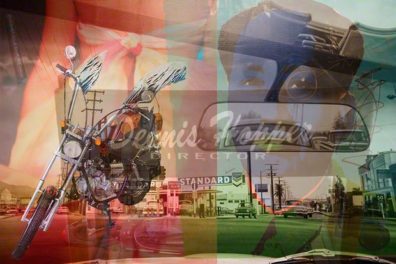
Studies of the upper body of a man and separate studies of an arm, a hand and an ear; sketch of a tree, 1511–1512, Michelangelo Buonarroti. Two shades of red chalk, some black chalk, 9 15/16 × 8 1/16 in. Teylers Museum, Haarlem, purchased in 1790. Image © Teylers Museum, Haarlem
During his lifetime, Michelangelo likely produced tens of thousands of drawings. But being protective of his ideas, and to give an impression of effortless genius, he destroyed many of them. Today only about 600 drawings by the Renaissance artist survive. A Getty exhibition highlighted 28 of them, giving viewers a window into Michelangelo’s artistic process. “He used drawings to record his observations, to explore certain ideas, to further develop these ideas, to reconsider them entirely,” said Assistant Curator Edina Adam.
The exhibition included a relatively high number of drawings in red chalk, which prompted the question: Why did Michelangelo use this particular drawing material?
Based on his surviving drawings, Michelangelo seems to have begun using red chalk extensively while working on the Sistine Chapel ceiling frescoes from 1508-1512. In preparation for some of the large-scale figures of ignudi (athletic male nudes), Michelangelo drew studies from live models in order to work out the forms of the figures and to capture the way the light from the chapel windows would fall on them.
He worked on highlights and areas of shadow, anatomical details, the outward appearance of muscles, as well as the details of fingers and toes. Probably the best-preserved example is the sheet of the Seated Male Nude, shown below.

Seated male nude; separate study of his right arm, 1511, Michelangelo Buonarroti. Red chalk, heightened with white, 11 × 8 7/16 in. Teylers Museum, Haarlem, purchased in 1790. Image © Teylers Museum, Haarlem
Michelangelo was keen on understanding the musculature of the human body and was known to attend dissections, said Adam. There, the artist could see exactly how a body was constructed from the inside out, and use that knowledge in his work. “Once you understand the musculature you can do anything,” said Adam, “including the highly complex postures that he’s known for because you understand the limits of the body.”
Yet Michelangelo also used red chalk for swift sketches of some of the figures surrounding the figure of God the Father in the Creation of Adam fresco, as on the sheet below, actually drawn on the back of the study above.

Studies of figures and limbs; figure sketches, 1511, Michelangelo Buonarroti. Red chalk, heightened with white, 11 × 8 7/16 in. Teylers Museum, Haarlem, purchased in 1790. Image © Teylers Museum, Haarlem
There are likely several reasons why Michelangelo opted to use red chalk while making these figure studies. First, the commission for the Sistine Chapel ceiling meant he was faced with a huge amount of preparation, and the ease of red chalk became increasingly important as he struggled to complete it.
To work out the details of all the figures in pen and ink would have been extremely labor-intensive, and sharpening quills and mixing inks would’ve added an additional distraction. Drawing in chalk necessitated great skill, but it also allowed Michelangelo a flexibility. He could create subtle tonal variations by applying more or less pressure onto the chalk or by wetting it. The red chalk also provided an immediate mid-tone on the paper and could be easily blended when modeling and shading forms. Being a naturally occurring material that was available to artists in sticks that could be sharpened as desired, it was also convenient and portable.
All of these features of red chalk would have likely appealed to Michelangelo as he came to create one of the most iconic works in western art.
To learn more about Michelangelo: Mind of the Master, take a video tour with curator Julian Brooks.
Michelangelo: Mind of the Master is generously sponsored by City National Bank. We thank them for their support.




Fantastic post. An addition factor that could possibly lead Michelangelo to use red chalk while working upon the Sistine Ceiling is involved in the fresco technique. The Sinopia was a standard practice among Florentine painters of the period and helped organize the work as a sort of “roadmap.” This red colored under painting would necessitate a lot of red pigment around that would also be useful for drawing studies for the reasons stated in the post.
I personally love red chalk drawings and use the medium often in my work. I even create drawing materials from the red clay found here in Italy, striving to emulate the wonderful examples of the Italian Masters.
J Paul Getty thank you for this. There were a number of things my college education did not cover and this was one of them. I had wondered for years “why red chalk?”
Amitabha
Sharon Roark
There is also a beautiful male figure drawing by Tiepolo at LACMA in red
The sienna chalk’s hue imparts the figures with a warmth related to blood beneath the surface. Psychologically the color suggests life.
I like Andrew’s explanation.
I was wondering if there were technical reasons why red chalk would be preferred to black chalk in those drawings. I imagine that the latter was as available as the former, but is it easier to erase or blend?
Thanks for your question! We asked curator Julian Brooks to respond — Both chalks are naturally occurring, and depending on the “batch” both could vary from hard to soft. Both would need to be sharpened, but in general, red was more likely to be softer and easier to manipulate (smudge, blend with the finger). Black chalk also doesn’t respond to moisture in the same way as red chalk. With red chalk, it only took a little moisture – saliva (or occasionally oil) – which could lead to a darker line or more orangey tone depending on the chalk.